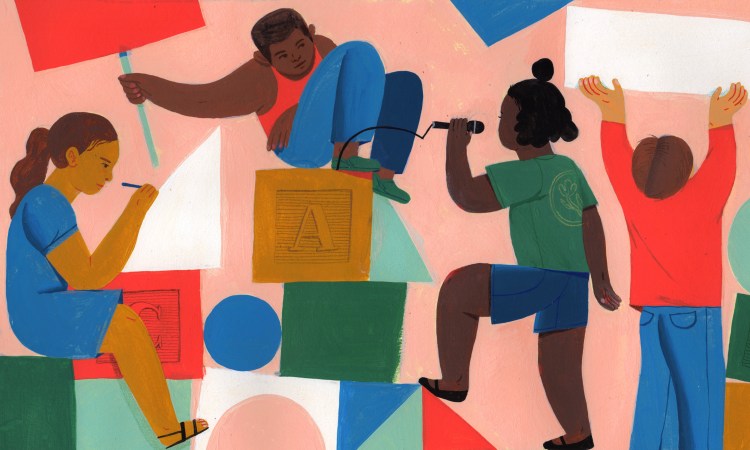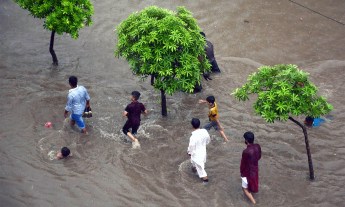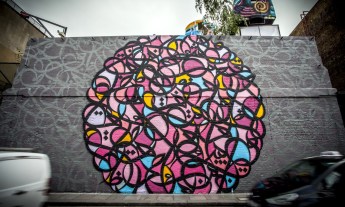
If we want our children to grow up to be thoughtful and engaged citizens, we should help them be part of social change now.
I grew up petrified of acid rain. The name itself was terrifying, and it haunted my waking hours. Did it eat people’s faces? Would wild animals survive it? My parents were not activists, but they were good citizens, recycling tin foil and eschewing gill-net tuna; when I decided to write a letter to President Nixon and ask him for answers, they gamely provided the White House address. But the letter that came back offered no solutions, threw out some platitudes about the importance of concerned children, and signed off with a signature that even my nine-year-old brain realized immediately was a stamp. Neither my parents nor I knew other avenues of action. I was left still scared — and irreparably disappointed in grownups.
Looking back, I wish I’d known some activist tactics. And that it had gone further: I wish I’d been taught concepts like privilege, prejudice and intersectionality at that tender young age, instead of bumbling all the way through early adulthood ignorant of primal social forces. That’s why I’ve watched with admiration as teens from Ferguson to Parkland, galvanized by their own terror of gun violence, have taken to the streets, to city hall, and to the steps of Congress. But what about younger kids? Should we teach our sixth, fifth, even fourth graders to be activists, too? Yes, definitely. Now.
I recognize this is controversial. “Parents need to hold the reins of activism and let kids be kids,” one man argued on Twitter in response to my latest book, which offers protest tactics for those as young as nine years old. Teaching activism, he lamented, meant that kids would be taking on adult responsibilities, “robbing them of laughter and the happy-go-lucky spirit.”
Keeping activism out of kids’ reach shortchanges them — by under-preparing them for life.
My Twitter acquaintance has his heart in the right place — but he’s also mistaken. Keeping a 10-year-old from learning about activism does not shield her from injustices. She has seen homeless people on the street. She’s been instructed to duck under her desk in active shooter drills. Maybe her whole family evacuated last summer for climate change-related wildfires/floods/hurricanes (pick one.) If she’s a kid of color, she has sensed the negative ways that she is often perceived by teachers, shopkeepers and police.
Even if you believe you have kept your child from directly experiencing any of the above, the internet has certainly breached your fortress walls. A friend’s 10-year-old son recently returned from his school day with the question, “Mom, what’s a mistress?” (Thank you, Stormy Daniels furor.) Keeping activism out of kids’ reach does not protect them. It shortchanges them — by under-preparing them for life.
Here’s the big not-so-secret: Kids know what’s going on.
They also have the capacity to be deeply upset by it. What we might call “social justice” boils down to what children would call “fairness.” As any parent knows, kids are keenly aware of who gets more cookies or less praise; studies tell us those as young as 15 months understand equitable treatment. Social issues like racism, sexism and classism are complex, but underlying them are simple concepts that kids can relate to and be moved by. Since they already sense inequities, now we adults need to help kids understand them.
While some actions can be supplemented with social media, activism is ultimately about groups of human beings face-to-face with each other.
The protection we want for young kids comes not by ignoring a social justice issue but by assuring kids we can explain it, even if we have yet to remedy it. And it’s vital to go one step further. We have to teach kids how to respond, with tactics that range from volunteering and raising money to boycotting and marching. These civic engagements not only empower, they can foster that happy-go-lucky spirit my Twitter friend was so concerned about.
There are so many other benefits as well: kids who take up activism learn real-life social skills, like teamwork, planning, strategy and communication. They listen to ethical arguments and form their own. And all this is done IRL, because while some actions can be supplemented with social media, activism is ultimately about groups of human beings face-to-face with each other. This interaction is vital. Right now, kids as young as eight spend an average of four and a half hours a day looking at screens and grow into teens who are less social, less empathetic, and more depressed.
To be sure, conversations about social justice can feel akin to the sex talk. What should we include, and what should we leave out? When we explain to a young person that this country was founded by activists who questioned the governance of the English king, how deep into the injustices to Native Americans and Africans do we also go? What details are included, and how gory must we get? Ultimately, it’s up to the parent. But, as with the sex talk, negotiating these boundaries does not mean ignoring the landscape altogether. Kids will find the information without us, but in grimy bits and pieces that are incomplete or incorrect.
This year and every year, let’s also imagine the power of schooling our nine-year-olds about social justice and civic engagement. It’s a win-win situation: it ensures our democracy will survive these trying times — even thrive — and so will all our kids.











